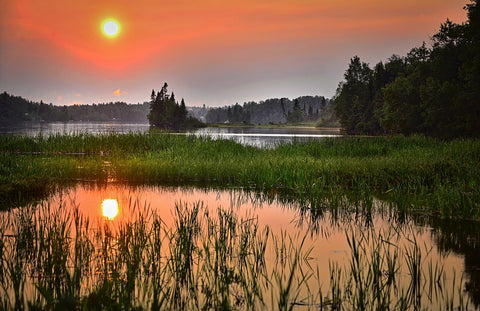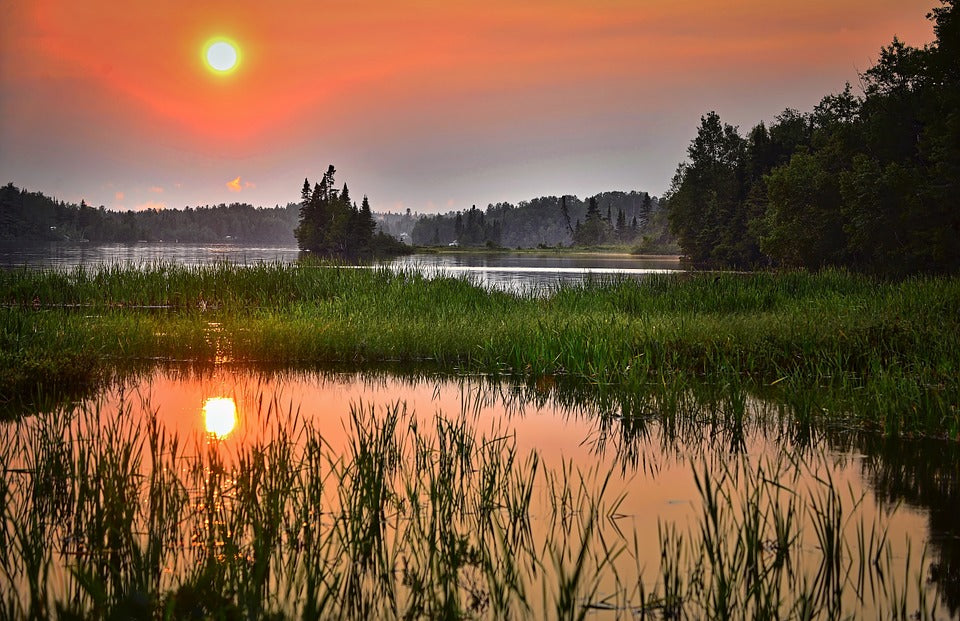Wetlands are defined as the places where the soil/land is covered in water. This can either be for a limited time or perpetually all year around. Contrary to what the public may think, these places serve a variety of beneficial purposes and are very important ecosystems.
Providing habitat for different types of wildlife, improving soil quality, and bettering the water supply are some benefits that a wetland provides as an ecosystem. Wetland ecosystems also serve the vital function of removing pollutants before they merge with open bodies.

Preventing erosion is yet another benefit that wetlands provide for us free of cost. On larger water bodies (like lakes), marshes and bogs on the edges can prevent the soil from crumbling. The shorelines stay protected and don’t get washed away. This, in turn, helps the lake (etc.) maintain its shape.
Sadly enough, the world has lost a significant number of these useful water bodies. Since 1900, 64% of the world’s marshes, bogs, swamps, etc. have been eliminated.
Major Threats
Development
The first threat that endangers wetland ecosystems is the rapid development of industries. The water is drained in order to make space for more factories and industrial units. In so doing, the benefits of the ecosystem are lost, and the wildlife is deprived of their natural habitat.
Moreover, the wastage that is pumped out by the factories plays a big role in damaging the wetlands. Reducing these types of wastages and harmful industrial movements isn’t that difficult if every person takes it upon himself to play a contributing part in it. If you regularly use items that are made with plastic and synthetic materials, replace them with organic products instead. For example, the next time you want to buy a tactical wallet, go ahead and purchase the Trayvax Element or Trayvax Contour instead of something artificial and synthetic.

Pollution
Pollution, while caused by industries as well, is also perpetrated by average people. All sorts of garbage can end up in water bodies by careless individuals. When the mess exceeds all bounds, the whole wetland becomes a dump and little of its former self remains.
The sad part is that the wetland ecosystem serves the very function of purifying and removing pollutants. But when they are burdened with an excess of it, it becomes a threat which, if left untreated, can culminate in their elimination.
This is also something that people can avoid should they try to be more careful with their everyday disposals. Whenever you find yourself close to a wetland, don't just throw your garbage in it without a second thought. This can be even more dangerous if you are disposing of things made of plastic.
Drainage
While the other threats mentioned above are merely threats, drainage is something that can effectively eradicate a wetland ecosystem. Unnecessarily creating space for more buildings or homes can lead to a dangerous reduction in wetlands, which can, in turn, bring about other harmful developments.
While draining does provide land for construction, the vital job of storing and soaking floodwaters comes to an end. This is a function that these ecosystems passively perform.
How Can Wetlands Be Conserved?
There are steps that everyone can take, regardless of who they are. For average people, it can mean simply becoming more responsible about their garbage disposal. For factors and industries, it can mean treating and neutralizing the harmful and toxic waste that they are pumping out by the gallons.
Don’t be hesitant about reducing the load in your front pocket wallet. If taking action about pollution entails spending money, it's an investment well made.
Another possible reason why people don’t bother with conserving places like swamps and marshes is the lack of knowledge. Should a person know about the essential and beneficial things that these ecosystems perform, they would not be so cavalier about their preservation.
People should create awareness about the necessity of these water-based ecosystems. If a certain swamp or marsh is frequented by people, a prominent sign should be erected for the edification of the visitors, and to educate them regarding the benefits provided by wetlands.
Conclusion
These were some of the major threats that are faced by wetlands all around the world. Destroying these necessary members of the environment can be exceedingly harmful to the surroundings.
People who aren’t aware of the necessity and importance of such an ecosystem will not take the necessary steps to avoid damaging and harming it. Hence, on top of adopting measures for preservation yourself, it is also important to create awareness in others for doing the same.



























































Leave a comment
All comments are moderated before being published.
This site is protected by hCaptcha and the hCaptcha Privacy Policy and Terms of Service apply.